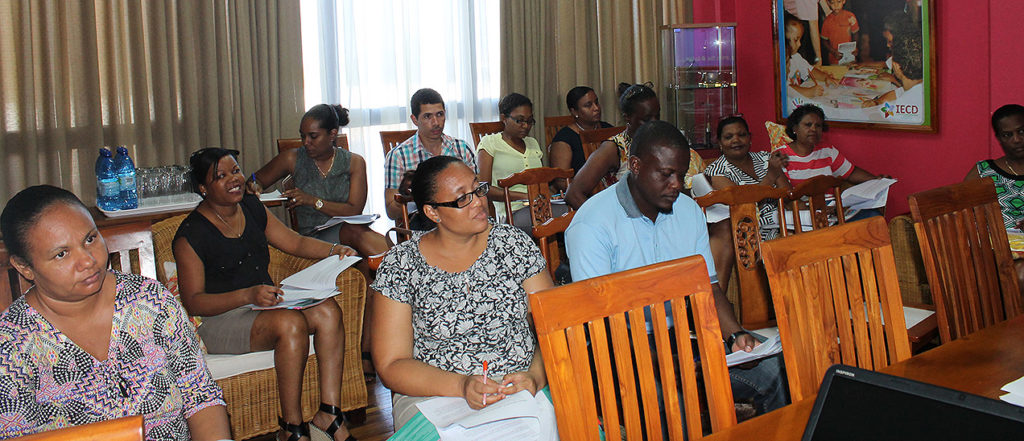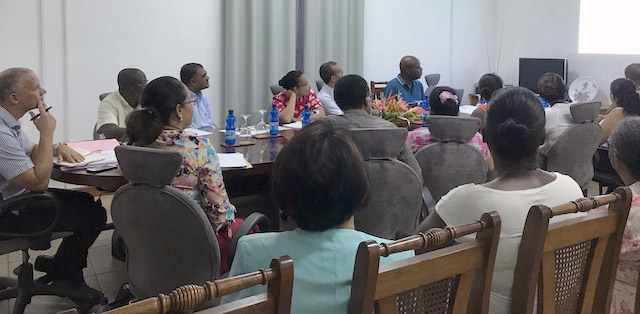
A Pilot Study on Some Indicators in the Health Sector
Introduction
The Institute of Early Childhood Development in collaboration with the Ministry of Health, supported by technical assistance from the World Bank, recently concluded a pilot study on data management for the health sector. The conduct of the pilot study was motivated by the Seychelles Early Childhood Care and Education Framework (2011), which championed the right to high quality, comprehensive, and integrated system of early childhood from conception onwards.
Why Data Management?
One of the framework’s core principles called for the need for data and evidence to monitor outcomes and guide effective policy response. It recognized also that there are currently many gaps in information and inconsistencies in collection and reporting of data across different sectors. Hence, it placed emphasis on the need for an integrated and comprehensive information system to provide reliable and up to date data on all indicators not only in health but all sectors involved in Early Care and Development or ECD.
Aims and Objectives of the Pilot
The pilot study which covered the months of October and November in 2017, aimed at strengthening the policy environment for ECD for decision making and reporting based on ECD indicators, through readily available information. More specifically, it was intended to:
- assess data collection procedures in the Health Sector for review
- develop a National Indicator Framework to collect information systematically
- produce a Procedural Manual, with data gathering tools and establish an information pathway with IECD for ECD indicators
- build capacity of ECD Professionals, in particular the health sector on international ECD indicators and information gathering practices
- test the procedures and data gathering tools
- develop a national database to record data and information based on ECD indicators for reporting purposes. ‘
Coverage
In terms of coverage, for this pilot data were collected on nutrition from a sample of 6973 children between 0 to 60 months. Data were collected for all the 17 health centres covering all the 27 administrative districts. For anemia in pregnant women, data were collected from a sample of 310 mothers, 124 for diabetes among pregnant mothers, 160 for anemia in young children, and 276 children for cases of low birth weight.
Indicators used in the pilot
The following 9 indicators were selected for the pilot, based on WHO (2006) standards and references:
- Prevalence of anemia among pregnant women (prevalence of haemoglobin <11 g/dL in pregnant women)
- Prevalence of anemia among young children (prevalence of a haemoglobin concentration of < 11g/dL in the blood of children 6 through 59 months of age)
- Prevalence of low birth weight (defined as babies born weighing less than 2500 g.)
- Prevalence of stunting (prevalence of low height – for – age in children under five years of age)
- Prevalence of wasting (prevalence of low weight-for-height in children under five years of age)
- Prevalence of overweight in young children (prevalence of high weight-for-height in children under five years of age)
- Prevalence of exclusive breastfeeding (defined as no other food or drink, not even water, except breast milk for the first six months of life)
- Prevalence of continued breastfeeding (proportion of children who are breastfeeding at 1 year)
- Prevalence of gestational diabetes (proportion of pregnant women with gestational diabetes mellitus based on glucose test results)
Final Remark
This pilot study has given both the IECD and the Ministry of Health the opportunity to work with benchmark indicators from WHO for child health and care. It has been a fruitful experience for all those involved in the trialling of the indicators dictionary and the data collection manual and the many lessons learnt will surely be valuable when the project is extended during the course of the year. The challenges of systematic data collection and efficient data management processes were evident in the pilot study and these will necessitate further training prior to the project roll out. This pilot has also demonstrated that results can be further disaggregated for more targeted interventions and policy discussion.









